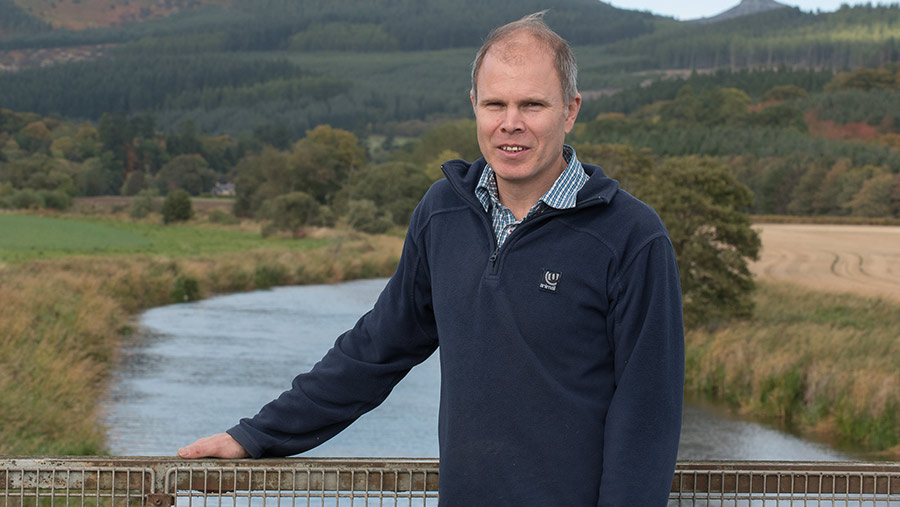Farmer Focus: Grain dryers should be designed with cleaning in mind
 © Angus Findlay
© Angus Findlay Some parts of England had no rain in July, so the 74mm we had seemed very generous. But, with lower than average rainfall almost every month since December it is very dry combining on light soils in Aberdeenshire.
Grass growth more or less stopped at the end of June and fertiliser applied prior to recent rain had little impact. As a result, we have had to start feeding straw and silage bales to some groups of stock.
Harvest got off to a record early start on 18 July, with winter barley coming off the combine at 13% moisture. Yields were just above average, but certainly affected by the dry conditions. We had lots of straw, particularly from the hybrid varieties.
See also: Harvest 2022: Hampshire wheat shows high yield despite low protein
With the dry harvest creating lots of dust at the grain store, I had to spend some time cleaning out the dryer today.
I came away from this feeling that anyone involved in designing such equipment should be sent to clean one first. There are too many unnecessary ledges to collect dust and panels which are difficult to remove. With some thought, this could be designed in a much better and safer way.
The first Golden Promise spring barley was cut on 1 August, and OSR was cut the following day. Rapeseed yields so far have been very good, with many fields over 4t/ha. I put this down to a range of factors, but getting good control of cabbage stem flea beetle last year at drilling is a major one.
Today, we had a few loads come in below 6% moisture, not something that I normally have to be concerned about. Hopefully a bit of blending through the dryer will bring the average up.
We started OSR drilling on 8 August, with barley stubbles that had been disced having a surprising amount of moisture and creating good seedbed conditions.
Once this is done, we will do some with the subsoiler and drill direct into stubble, which should conserve moisture. However, ex-fallow land, ploughed a couple of weeks ago is much too dry and will have to wait until after some rain to be drilled.


